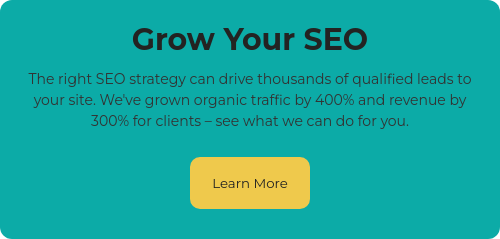Are you tackling your brand’s SEO and content marketing as two totally separate initiatives? A lot of marketers approach it this way, but what they don’t realize is that they’re missing out on the power generated by pairing up the two.
When you combine SEO and content, you’ll gain untold rewards (actually, we’ll tell them in just a bit, so hang tight). And if you try to keep them apart? Think star-crossed lovers Romeo and Juliet — and we know that didn’t end well.
No, it’s better to nurture the love affair between SEO and content and leverage them against each other to maximize your impact and grow your brand. Want to find out how? We’ve got you covered.
Check out our guide on using both content and SEO to boost your brand and get more traffic and leads:
What Is Content Marketing?
Let’s begin with the basics. Content marketing is just what it sounds like — using content to market your brand. Content marketing is flexible, scalable, and — best of all — highly effective.
It’s primarily a form of inbound marketing, and while you can use paid advertising to support your efforts, it’s not always necessary. Organic marketing, like content and SEO, can take a while to reach its full potential and deliver results, but once you get them going, they turn into an engine for growth.
Content marketing utilizes various forms of content, and really, the sky’s the limit. You can stick to your basic blog or branch out as much as your imagination (and your budget) allows. Create viral videos, host a podcast, ask your best customers for user-generated content, or design eye-catching infographics. That’s the beauty of content — it can be whatever you want and need it to be.
Why Is Content Marketing Important?
Content marketing takes some work, and it takes some patience. If you’re wondering if it’s worth it — we can tell you it is. But don’t take our word for it. Here’s why content marketing matters:
Content Is Central to a Successful Digital Strategy
You can think of content as a web that connects pretty much all of your other marketing efforts. Running a lead gen campaign? What’s your lead magnet? Content. Focusing on email marketing? What goes in the emails? Content. You get the idea. Content is the common thread that links all of your other digital marketing strategies.
High ROI
ROI can be hard to track when it comes to content because it touches your audience at every stage of the funnel and every step on the buyer’s journey. Content conversions don’t always mean sales — they might indicate downloads, newsletter signups, or click-thrus.
Keeping that in mind, content comes with a great ROI if you track all the right metrics. Content (especially combined with SEO) will give you a boost in site traffic, which could definitely lead to more conversions. It can also increase shares and engagement on social media and impact general brand awareness.
Content marketing is a pretty low-barrier investment, meaning you don’t have to blow your marketing budget to start... which might matter a lot to startups or SaaS brands with a long sales cycle. Content creation is where you’ll spend the most, but once you’ve got it in your library, you can maximize that investment by refreshing and repurposing it to use in new ways.
Improve SEO Results
Great content is key to your SEO performance. You want to create content that’s optimized for search, making your keywords easily discovered by search engines. You’ll also want to make sure that any traffic you’re driving to your website via SEO has strong content that fulfills search intent and leads visitors to stay on the page and eventually convert.
Bottom line: The more quality content you create, the higher you’ll rank. The higher you rank, the more visitors you’ll get to your site. And the more visitors who see the amazing content on your site, the more conversions you’ll get.
Build Trust and Authority
Good quality content does a lot more than get you traffic — it also fosters a relationship with your audience. When they receive content that provides them with something of value, your brand gains more authority, but it also wins their trust. Once they see they can rely on you to supply them with useful information, they’ll be sure to come back for more. And in the process, you’ll find that your brand’s reputation becomes stronger.
Generate Better Leads
If you want to get high-quality leads, you can move through the stages of your funnel; nothing beats content.
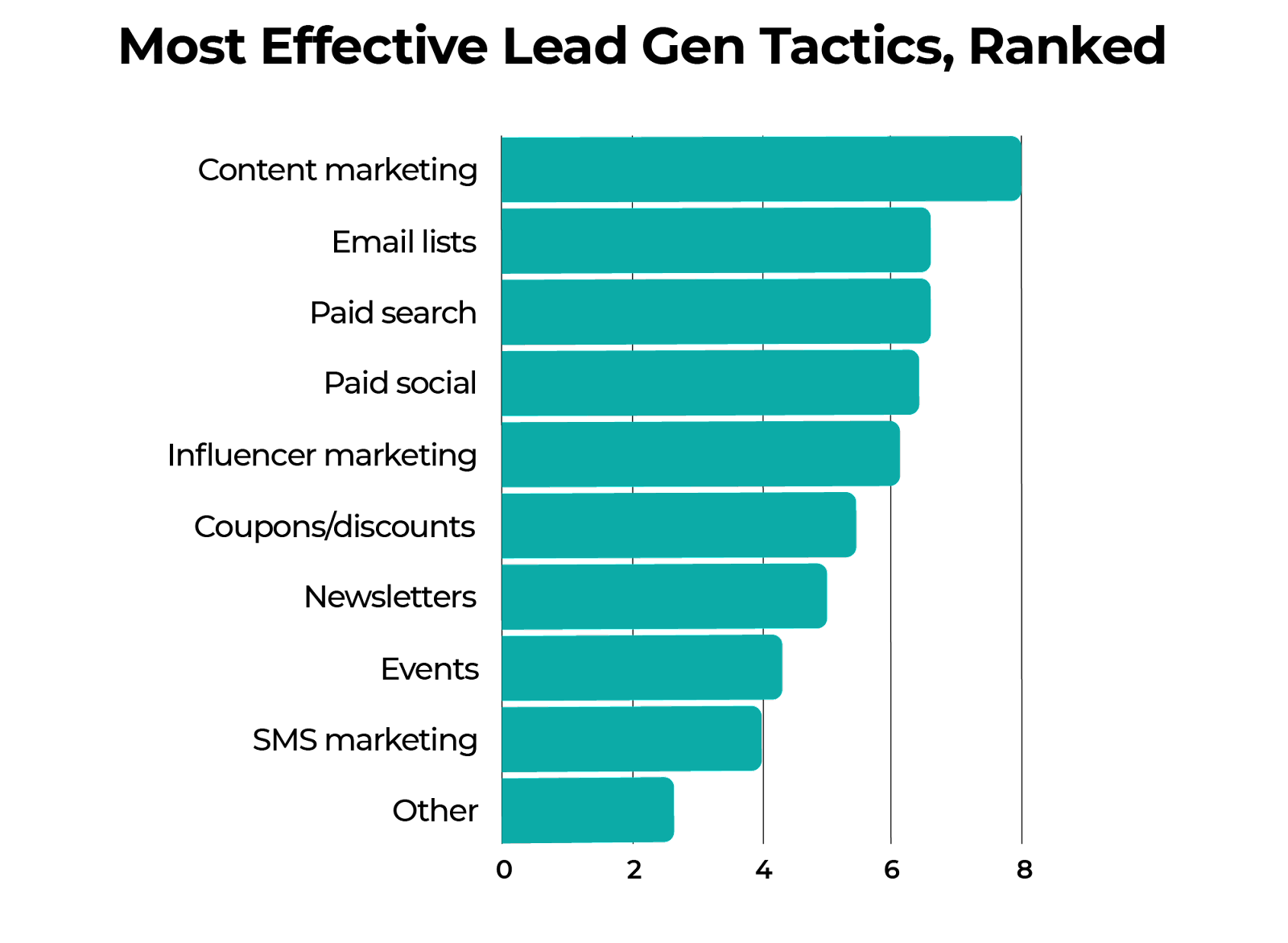
You’ll get more leads, but more importantly, you’ll get higher-quality leads. Use content marketing to create irresistible lead magnets, build email campaigns that get results, or design gated content to get more motivated contacts.
Gain More Visibility Through SEO
Content helps your brand get found — by potential customers and search engines alike. And as we said early on in this article, nothing goes together quite as well as content and SEO. But to make them both work for you, you need to understand exactly how SEO works.
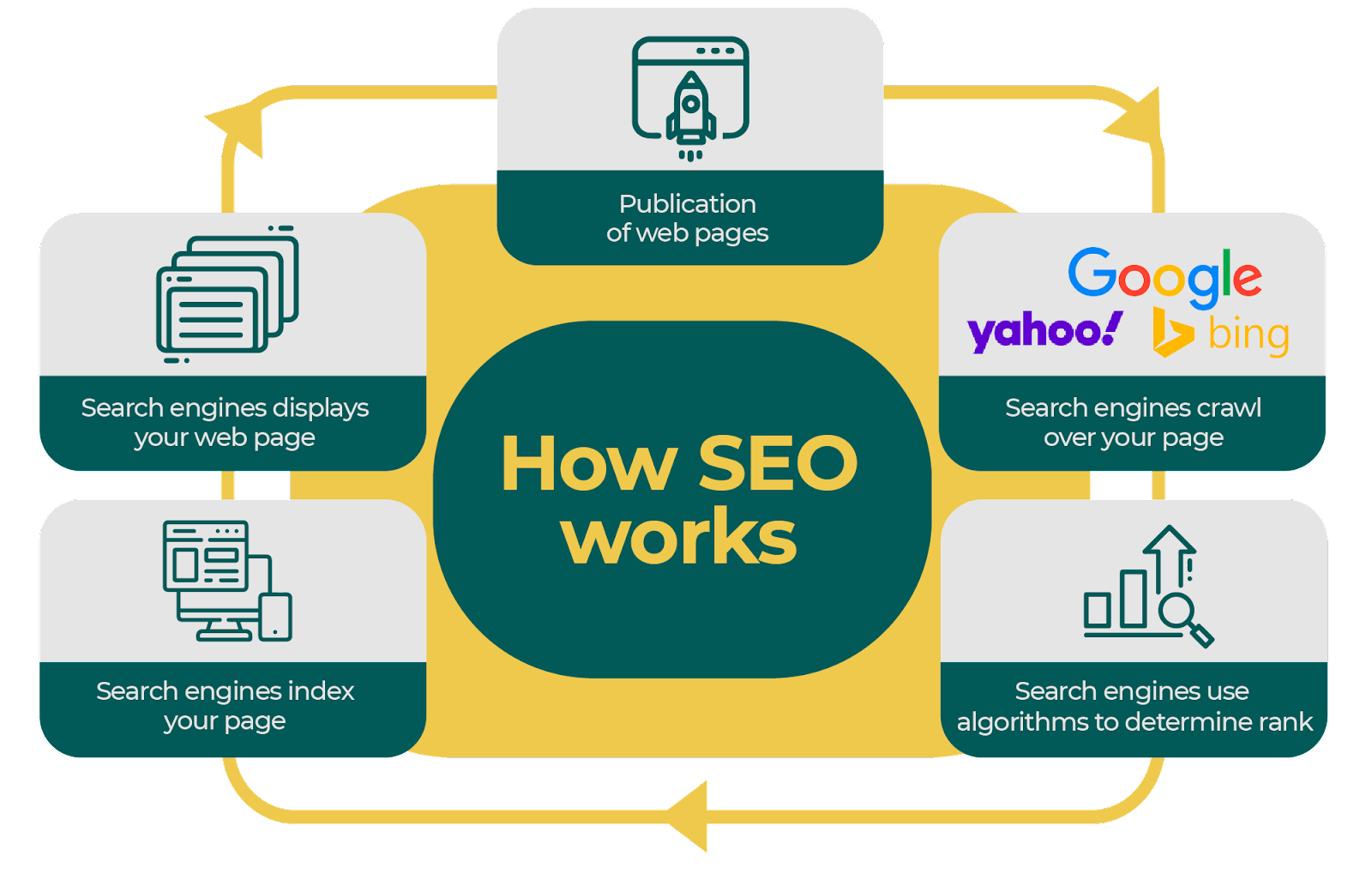
In this example, your web pages are critical to your success. Using content marketing, you want to ensure that all web pages and landing pages are optimized for search, contain clear messaging, and include all of your primary keywords. This is how your brand gets seen and discovered by both Google and users.
Your Competitors Already Use Content Marketing
In a Semrush survey, 97% of marketers said they currently incorporate content marketing into their overall marketing efforts. That means chances are really, really good that your competition is no stranger to the world of content. So, you need to know what types of content they’re using to understand when you need to create better content or get ahead by creating content that fills in the gaps in their strategies.
Now that you know why content marketing is important, let’s look at how you can combine content and SEO to maximize your efforts.
15 Tips to Combine SEO and Content Marketing for Success
As we said earlier, content and marketing are just better together. We’ve already used all the analogies, like PB&J, mac n’ cheese, wine, and…well, anything. So you get the drift by now. But what we really want to show is all the practical steps you can take to partner up your SEO and content strategies and reap the rewards of this match made in heaven.
#1: Start with Keyword Research
When you hear “keywords,” you probably start thinking about SEO, but keywords are equally important to content, which is where they’ll be showcased. When it comes to choosing keywords, you don’t want to aim for the biggest. Instead, go for long-tail keywords — the ones that are very specific phrases and much longer than standard keywords.

Long-tail keywords have a pretty low search volume, as you can see above. But that also means they have far less competition and come with much higher search intent. Once you start ranking for those, you’ll likely find your conversions increasing, as you’re giving your search audience exactly what they’re looking for.
#2: Understand Your Market
This is a pretty broad step, but it’s also a very important one. You need to understand what’s happening in your market — from industry trends to what thought leaders are talking about to what your buyer persona’s biggest pain points are. This takes quite a bit of research, but it also paves the way to a deeper understanding of the changing landscape of your market, so you can think forward, anticipate major shifts, and be prepared for them.
#3: Create a Realistic Plan
It’s easy to get caught up in the early stages of planning your content and SEO strategies. As we said, when it comes to content, the sky’s the limit. So you might be tempted to shoot too high, which often leads to overwhelm — which can tank even your best intentions.
Instead, be prepared going in, and make sure that whatever strategy you're creating is actually achievable. Be warned that there are many steps to consider for both your SEO and content strategies, so you’ll need to make sure you have the endurance and stamina to get through them all.
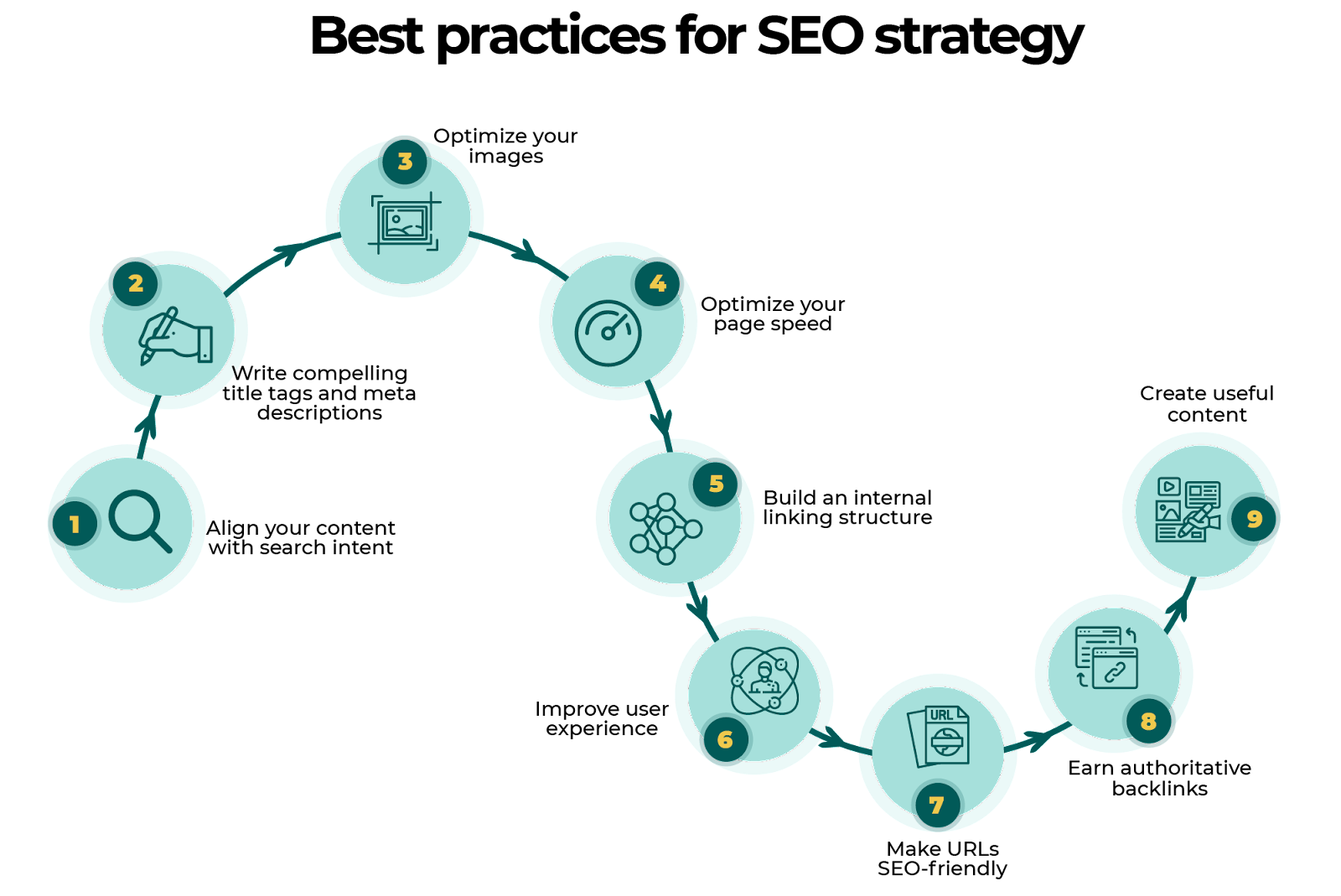
Of course, the payoff, though it takes a while, is usually worth it. Once you see results for your content and SEO strategies, you’ll know that you made the right choice.
#4: Think About SEO When Creating a Content Marketing Strategy
Neither your content nor your SEO strategy should be created in a vacuum. Both of them should inform the other, and both should work to support each other in goals and tactics. To combine your SEO and content efforts, you’ll need to take a few steps to make sure they’re aligned.
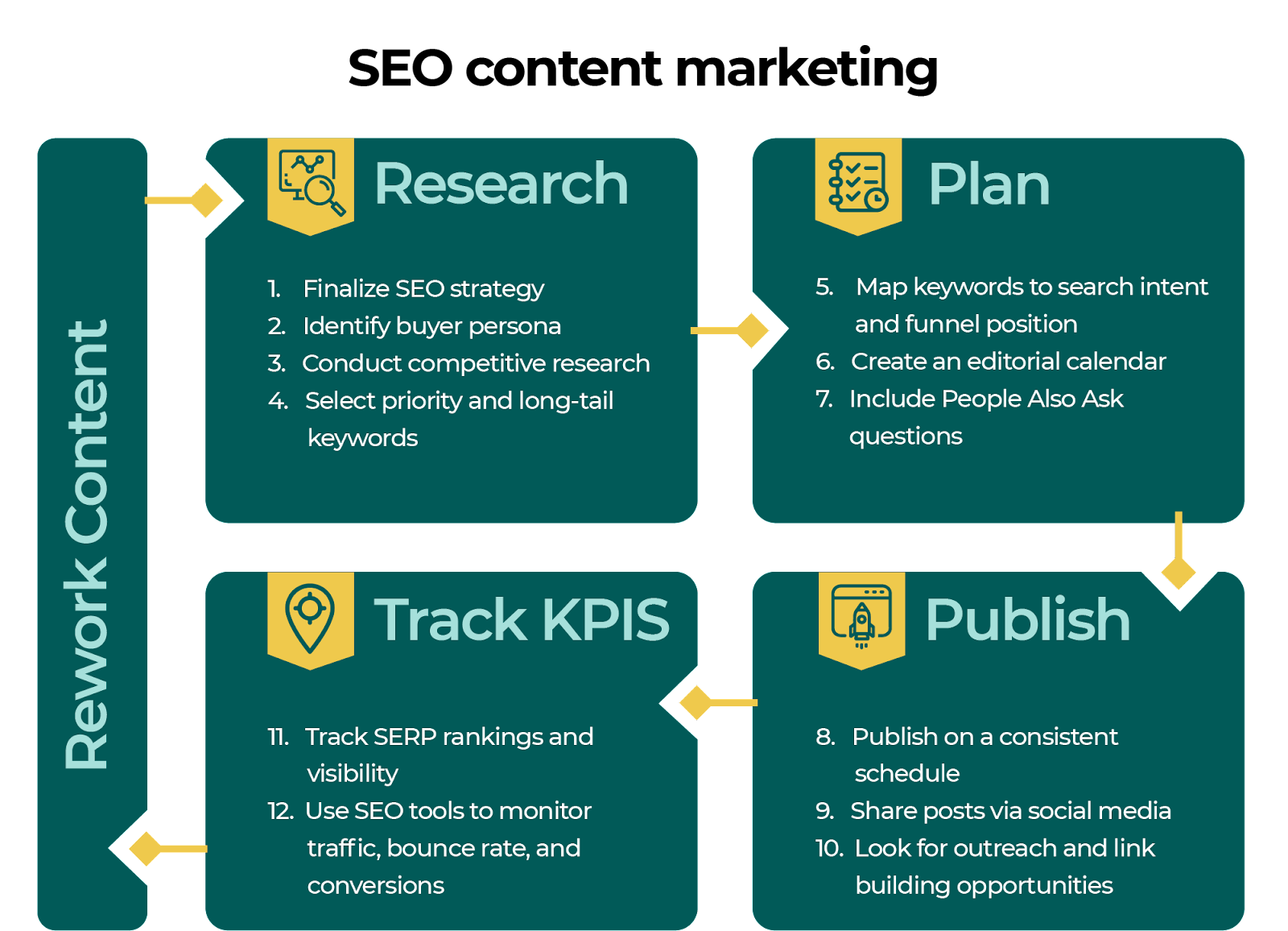
On the sidebar on this image, you can see “rework content” as the connecting link that starts the SEO content cycle over again. That’s because you can always return to older, existing content and refresh it to maximize results.
Here’s what to consider when building an SEO-informed content strategy:
What Do You Want to Share?
What do you want to share about your brand? What do you want your audience to know or think about you? This includes everything you’d like to communicate to give everyone the clearest picture of who you are and what you do.
What Does Your Audience Like?
This step takes your buyer persona(s) into account and uses that to leverage SEO. Consider their pain points, what solutions they need, and what they might be searching for to help find them.
What Does Google Favor?
There’s no getting around Google. Once you’ve compiled a list of keywords you want to rank for, do a search yourself. See what comes up on the first page, and then you’ll know what brands and types of content you’ll need to beat if you want to outrank them.
#5: Understand Search Intent
Every time you (or anyone) search Google, you go there with an intent to find something. It might be general information on a topic, or it might be a specific brand or topic you’re interested in buying. Whatever the case, that’s called search intent, and understanding it is the breakthrough you need to create a highly effective SEO and content plan.
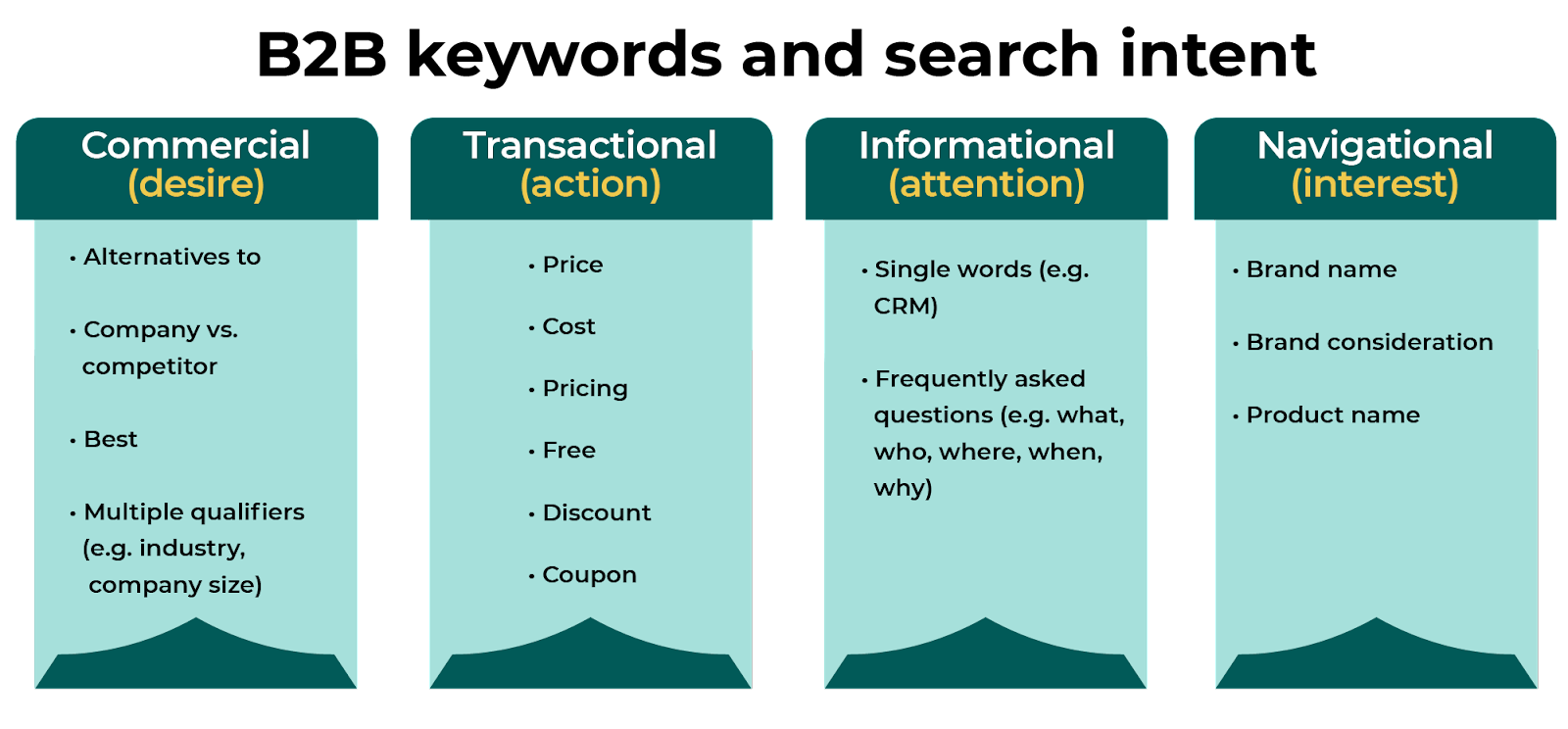
Search intent can vary between brands, but these four general categories can typically be found amongst your audiences.
#6: Avoid Keyword Cannibalization
This is what happens when you create a ton of content without plotting out your keyword strategy. When you have too many pages too focused on the same keywords, they will fail to rank. That’s why you need to keep a close eye out for duplicate content and pages that are too similar in topic and theme.
Whenever you think you want to create a new page, be sure to ask yourself if a similar page already exists. You may be able to refresh and re-optimize the existing page and content (which is always preferred) rather than creating a new one.
#7: Understand the Different Types of SERP Results
Pick the right keywords, create some killer content, and you’re sure to hit the first page, right? Not exactly. There are many other factors that influence where you end up in search engine results pages (SERPs). Some of these include:
- Location: Are searchers looking for a local solution?
- Brand: Do they want to find results with a particular brand?
- Search origin: Are they searching from a mobile device, laptop, etc.?
- News: Do they want breaking news, tweets, or short snippets about current affairs?
- Answers: Are they seeking straight, to-the-point, zero-click answers to basic questions?
There are other types of search results, including those with visuals, rich snippets, shopping/commerce links, and more — but understanding what kind of result your audience wants for each long-tail keyword will help you provide the content they need to click.
#8: Determine Which Content Types Resonate with Your Audience
There are pretty much endless types of content and content formats out there. The trick is knowing which one will work the best for your buyer persona. Some of the main factors to consider include:
- Business type: Are you B2C or B2B (or a hybrid)?
- Funnel stage: Where’s your audience in the funnel — top, middle, or bottom?
- Social habits: On which platforms does your buyer persona tend to hang out?
- Competition: What content formats are your competitors creating and having success with?
- Industry trends: What’s popular across your industry?
Content types could include everything from TikTok videos to shareable infographics to lengthy how-to guides. But don’t forget the basics like blog articles, case studies, and social posts — those are content types, too.
The types you choose will depend on the factors above and also your budget, capacity, resources (like internal or freelance content creators), and where your prospects are in the content funnel.
#9: Consistently Publish New Content
You want to ensure that you’re not dropping hot new content and then disappearing for weeks or months. To increase brand awareness, build relationships with consumers and improve SEO, you need to distribute your content regularly. For most brands, that’s typically a couple times a week or more, but once a week is a good “bare minimum” to shoot for.
You also need to keep in mind that you can’t just publish any old content just to say you did. Everything you put out there needs to be relevant and high quality. Plus, it needs to be written with SEO in mind.
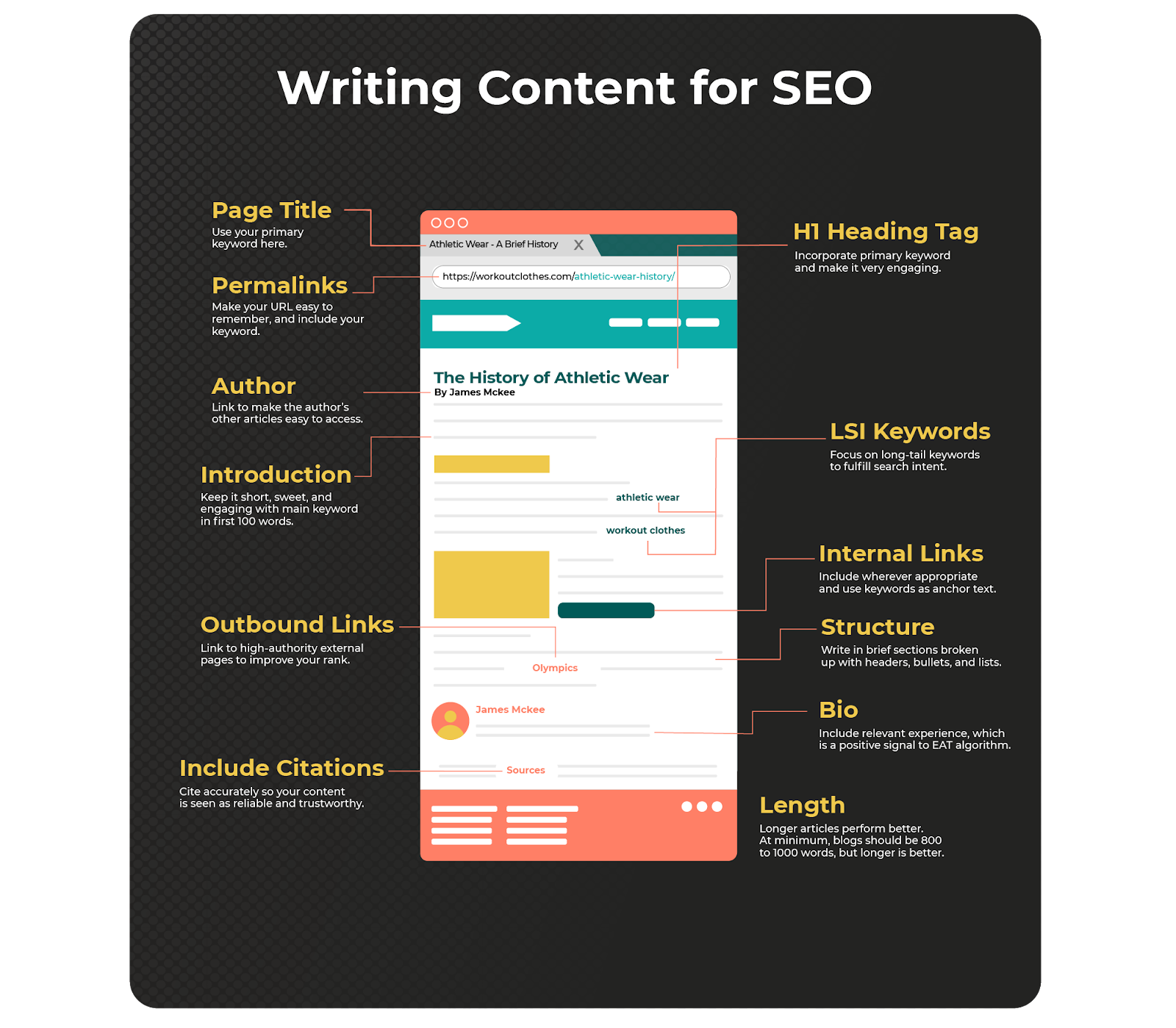
Pay close attention to the diagram above — you need to make sure you’ve got your keywords in prominent positions if you want your content to rank, and you’ll need to have a strategy for internal and external linking, page and site structure, and more.
#10: Maintain a Search-Friendly Site Structure
Speaking of site structure, it’s important that you understand how user-friendly your site is when it comes to SEO and content. Ideally, you want every page on your site to be no more than three clicks away from the home page. You’ll also want to analyze all the pages on your site for content and SEO so you can resolve any major issues.
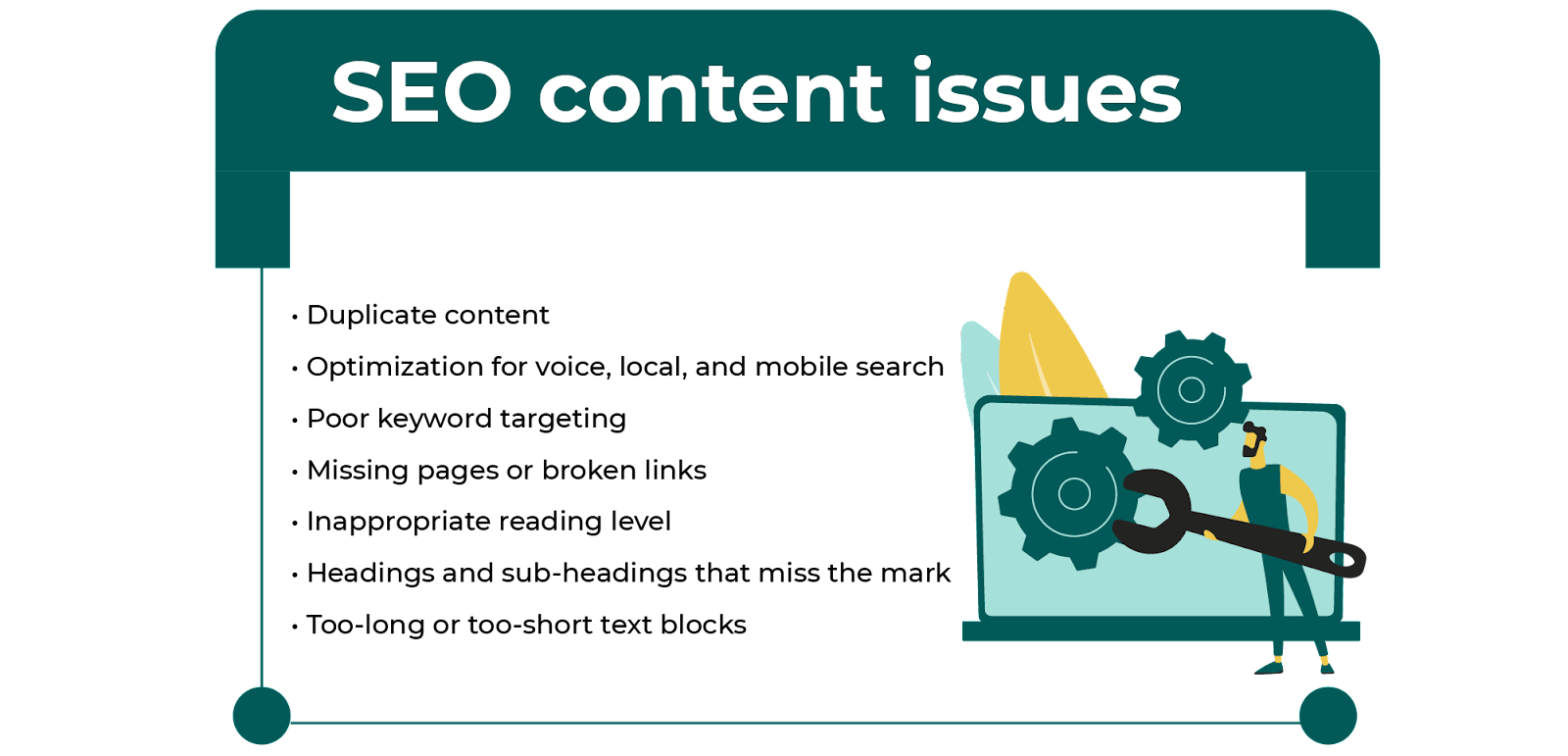
Consider a topic cluster structure to help keep your content more organized and easily findable in search.
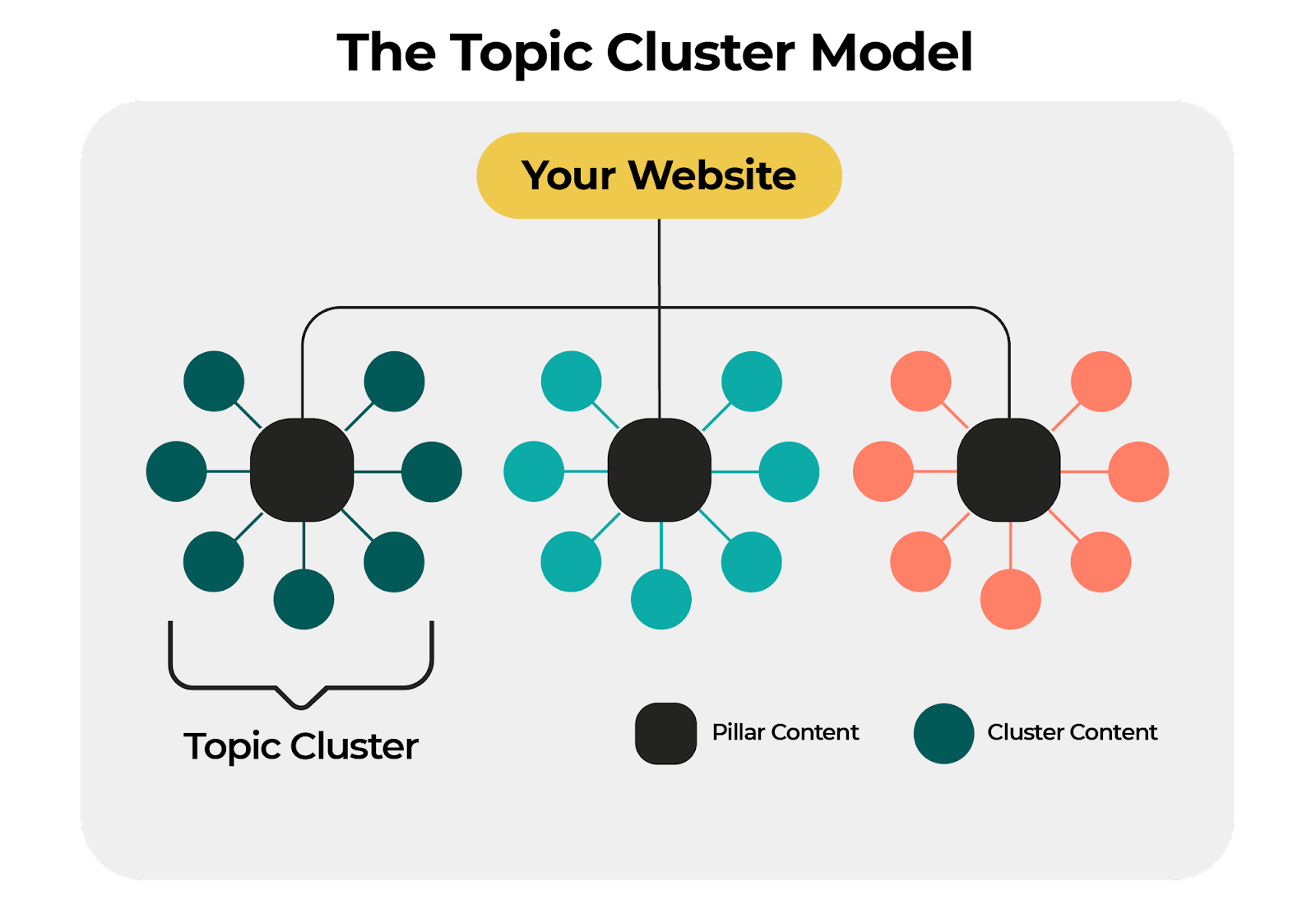
#11: Evaluate Link Value
One critical piece of both your content and SEO strategies is building your backlink profile. You want other third-party sites linking back to yours to improve your SERP ranking and get your brand in front of a wider audience.
But keep this in mind: Not all backlinks are created equal. You don’t just want the most backlinks — you want the best backlinks. That means those that are highly relevant to your industry, from trusted and reputable (read: high authority) websites.
If you start to notice some sketchy backlinks popping up, be wary. If your profile is full of low-quality links from questionable or irrelevant sites, the pendulum could swing the other way and it may cause serious damage to your ranking.
#12: Refresh Existing Content
The lifespan of content is a long one, which is one of its greatest benefits. Once you’ve created a piece of content, it’s yours to do with whatever you like — whether that’s updating it with new information in the same format or repurposing it as a different content type and pushing it out on a totally new channel.
Refreshing old content can give your brand a serious lift.

While repurposing existing content certainly saves both time and money, those are nowhere near the biggest benefits listed. Instead, reusing old stuff is a win because it ramps up audience engagement, boosts awareness, and increases traffic.
#13: Use Real-Time Behavior Data to Improve Content
What are visitors doing when they land on your site? Unfortunately, if you’re using traditional analytics, you’ll miss finding issues at the most critical moment — when they're actually happening.
Instead, you might want to use those analytics to identify trends in behavior, then adapt your site to provide real-time solutions. For example, you can serve up personalized content and offers on the site or add a chatbot that can supply them with helpful content in the moment.
You can also get direct, immediate feedback through surveys and popups, then use these to create better content. You might also use a heatmap to find where visitors are most likely to click, interact, or bail on your site.
#14: Implement Technical SEO
Technical SEO is often called the low-hanging fruit of SEO, but it should never be ignored. Low-hanging fruit is the best — it’s easy to get to and has an immediate impact. It’s the quickest way to kick your SEO strategy into action.
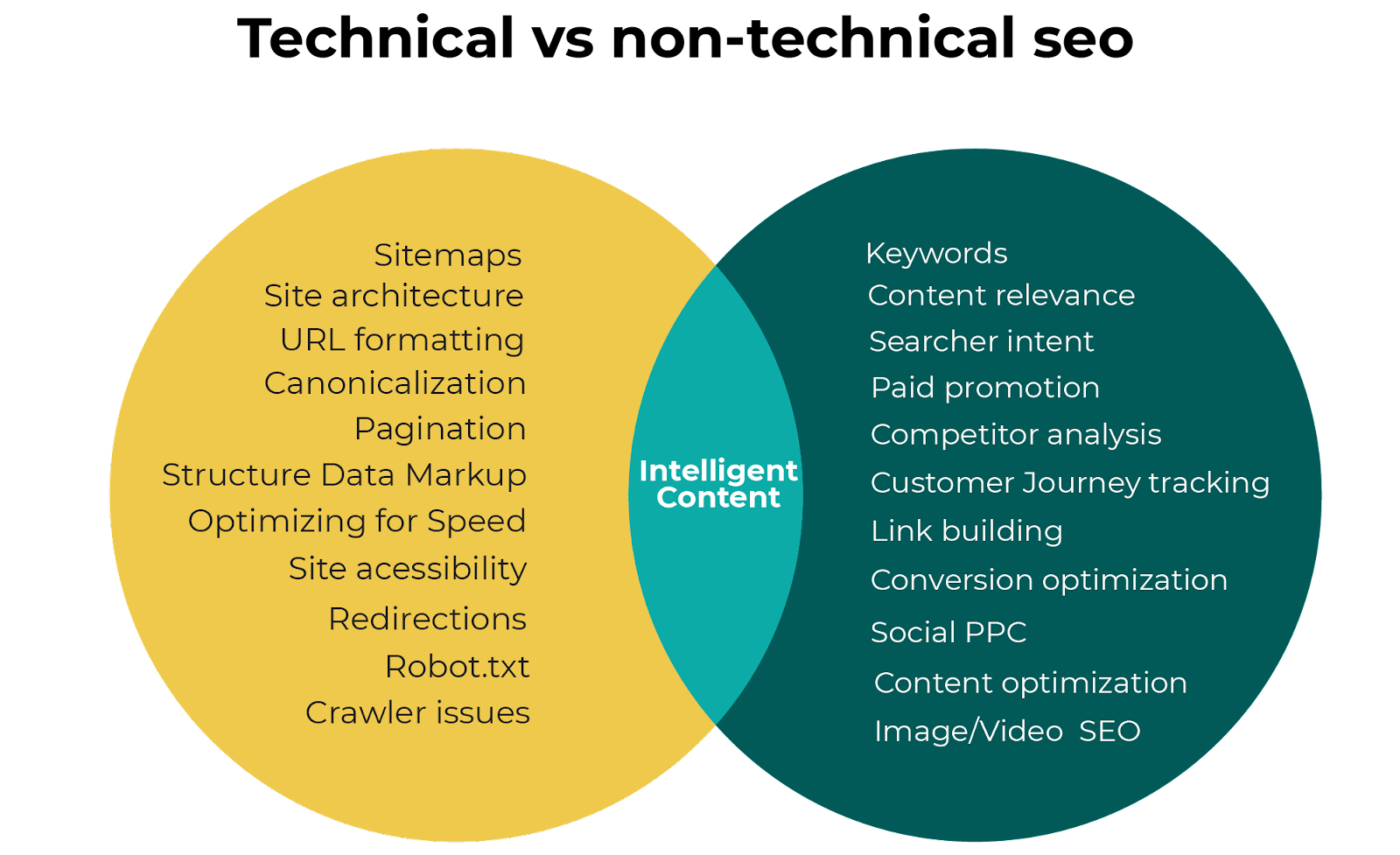
Technical SEO fixes 404 errors, slow site speed, and more. Once you accomplish these minor fixes, you’ll find a major lift to your performance, and your content can shine.
#15: Use Conversion and Engagement Insight to Determine Your Best Performing Content
As we said earlier, it can be hard to track the real ROI of content because conversions don’t always mean sales. You’ll need to lay out your KPIs before you get started with your content and SEO strategies so you know exactly what you need to measure to determine your success.
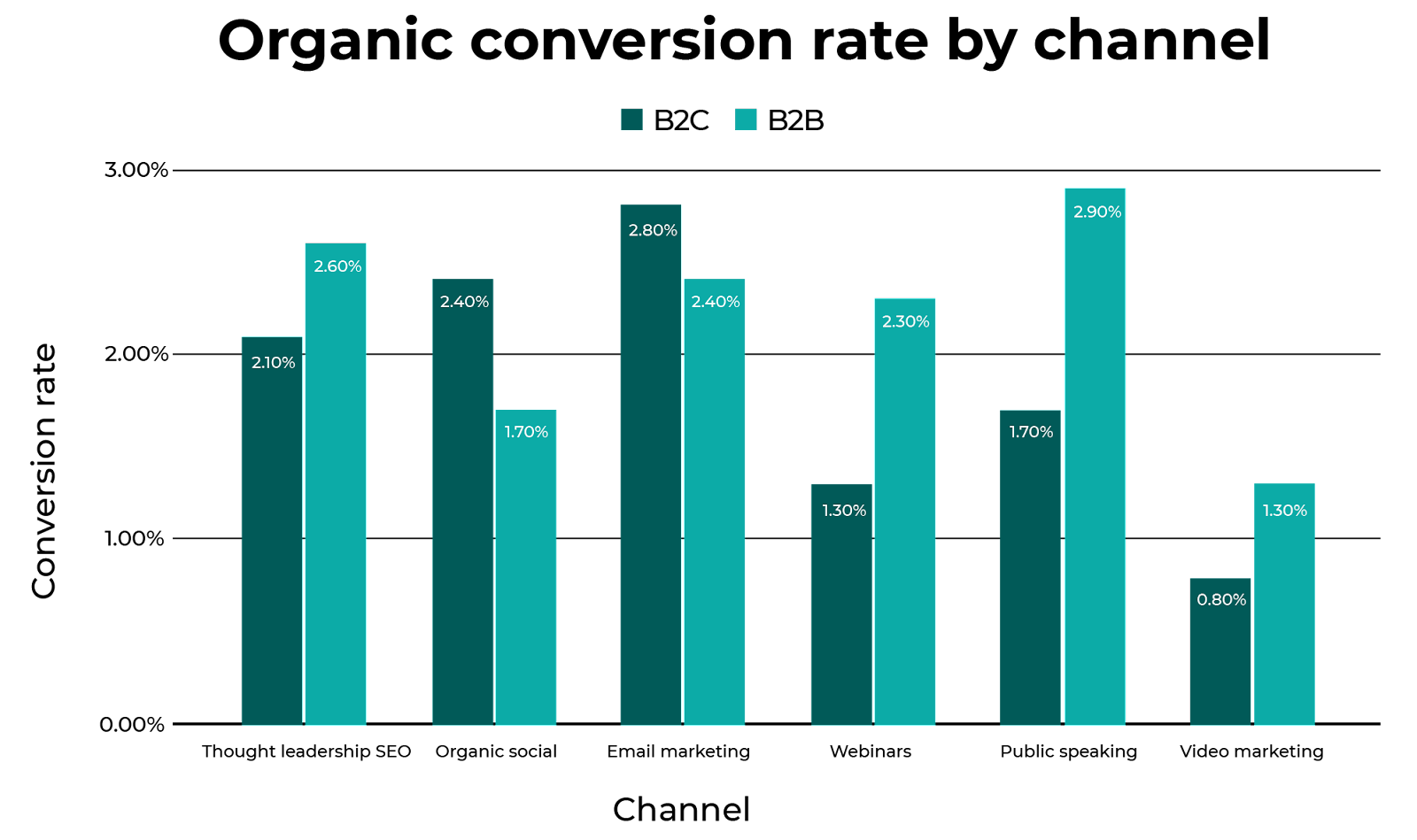
As noted above, conversion rates will vary quite a bit across channels and also by business type. But you can still create a process for measuring your performance by tracking conversions on Google Analytics and monitoring your social engagement through your chosen platform.
SEO vs. Content Marketing: Should You Choose One or the Other?
SEO…or content? It's basically like choosing Romeo or Juliet. And we all know that at the prospect of being kept apart, they swiftly kicked the bucket. But your SEO and content strategy don’t have to.
To maximize your efforts and your investment, the best approach is to combine both into a powerhouse strategy that will drive long-term, sustainable growth.


